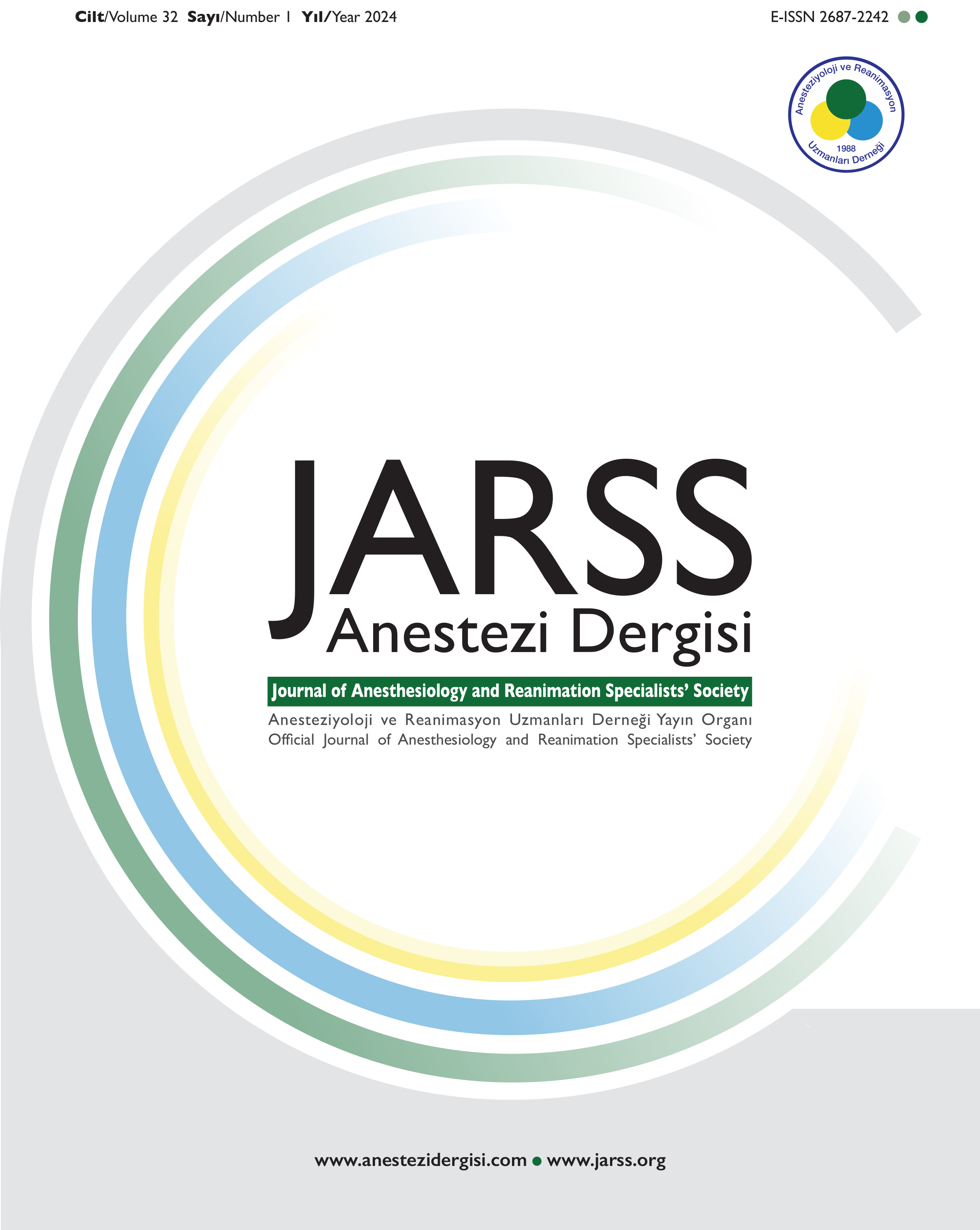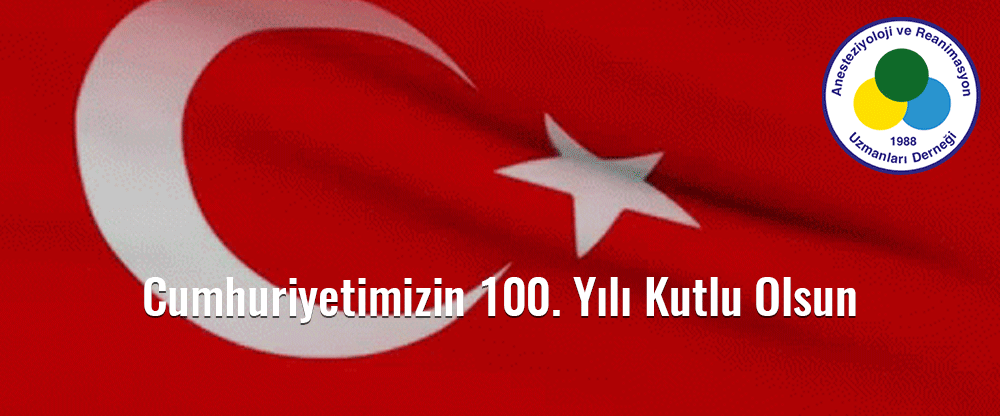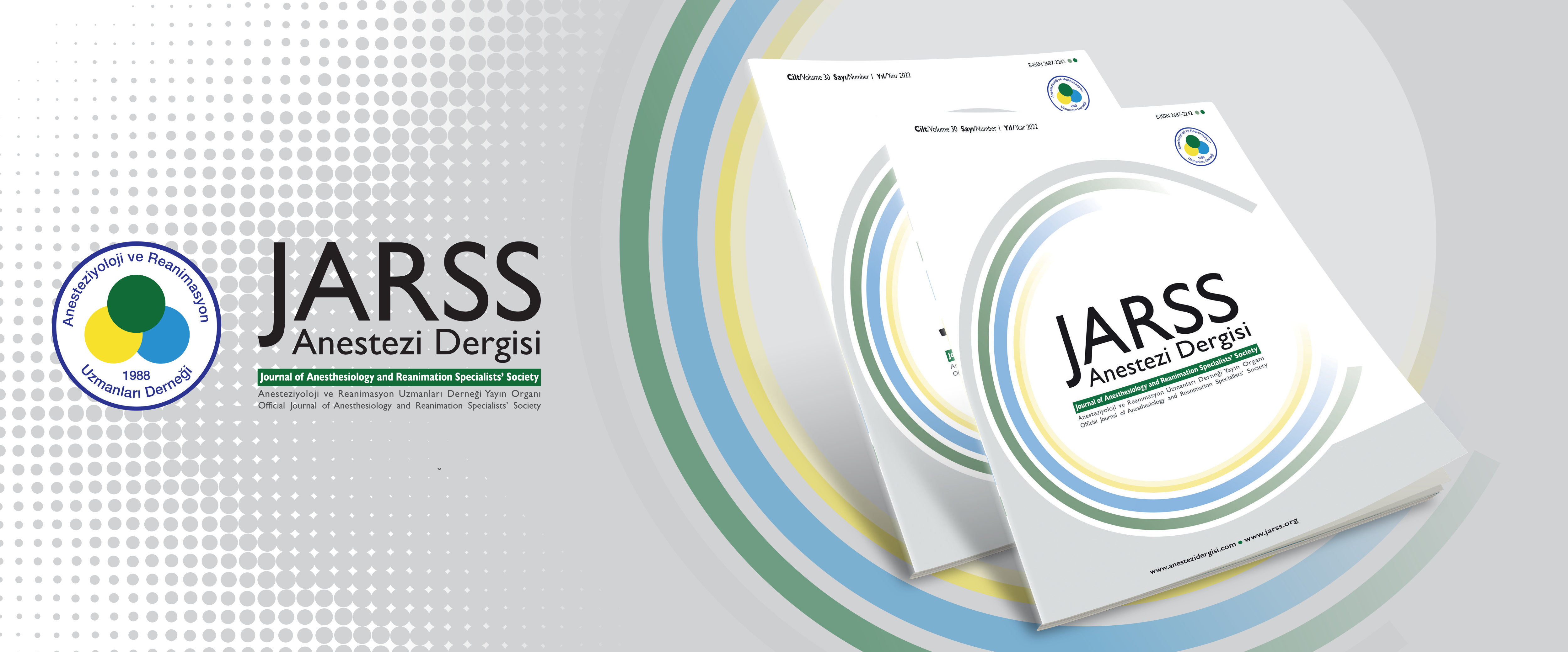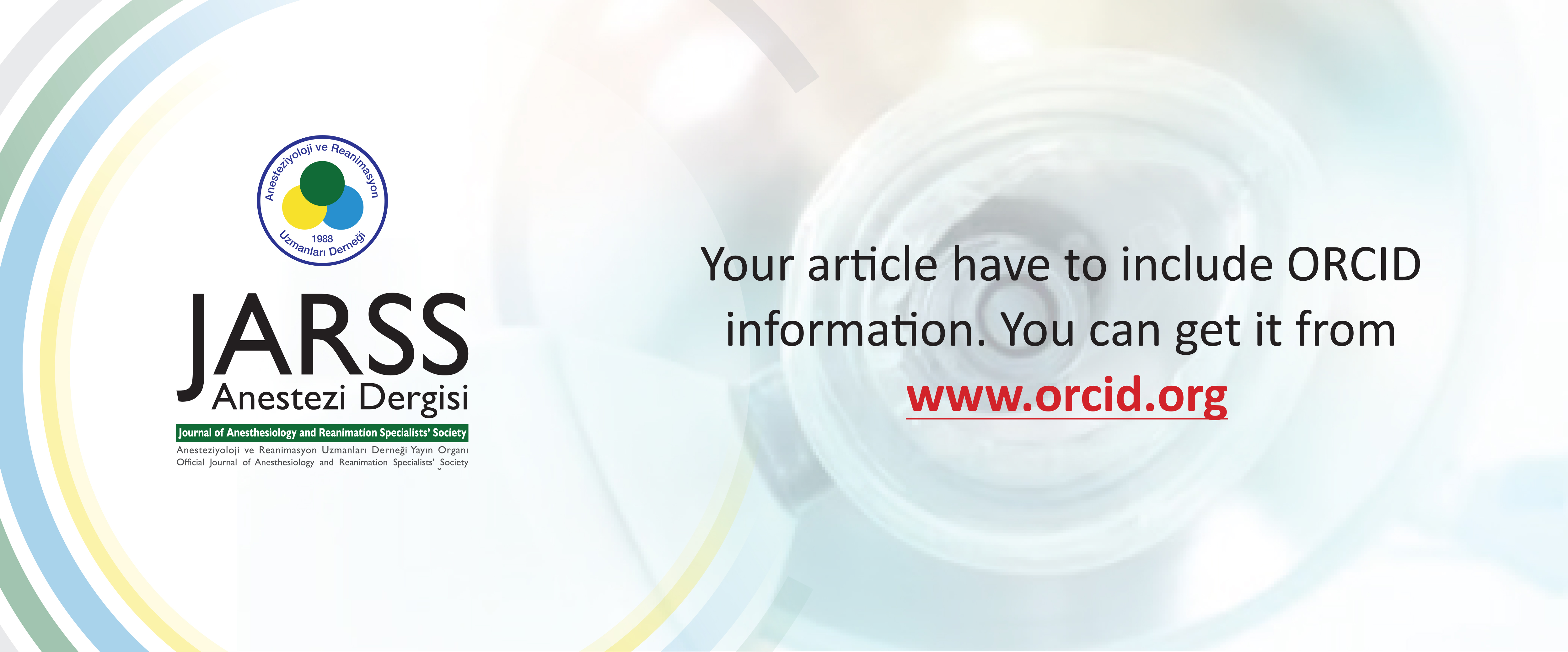Manuscript Preparation
The manuscripts should be prepared in accordance with ICMJE-Recommendations for the Conduct, Reporting, Editing and Publication of Scholarly Work in Medical Journals Authors are required to prepare manuscripts in accordance with the CONSORT guidelines for randomized research studies, STROBE guidelines for observational original research studies, STARD guidelines for studies on diagnostic accuracy, PRISMA guidelines for systematic reviews and meta-analysis, ARRIVE guidelines for experimental animal studies, and TREND guidelines for non-randomized public behavior.
Texts, tables and images should be loaded separately from the relevant sections of the system. The uploaded files should have no information about the authors. Author, communication and institutional information are also recorded in the system. Authors are required to submit Ethics Committee Report, Copyright Transfer Form and Potential Conflict of Interest Disclosure Form with the manuscript. These forms are available for download at the journal's web site.
All manuscripts should be submitted as Microsoft Word (.doc or .docx). Times New Roman with a font size of 12 must be used. All manuscript pages (including references, tables, and figure legends) must be double-spaced. Manuscripts should have 1-inch (2.5 cm) margins at top, bottom, and sides. Pages must be numbered consecutively in the upper right corner in the following order: title page, abstract, and body of text, acknowledgments, references, figure legends, and tables.
Abstract and Keywords: An abstract should be submitted with all submissions except for Letters to the Editor. The Turkish and English abstract of original articles should be structured with subheadings (Objective, Methods, Results, and Conclusion). English title should be added.
Each submission must be accompanied by a maximum of five keywords for subject indexing at the end of the abstract. The keywords should be selected from the National Library of Medicine, Medical Subject Headings database.
Text
Original Articles: The main text of original articles should be structured with Introduction, Methods, Results, Discussion, and Conclusion subheadings.
Information on statistical analyses should be provided with a separate subheading under the Materials and Methods section and the statistical software that was used during the process must be specified.
Units should be prepared in accordance with the International System of Units (SI); also, (.), (/), or (·) should be avoided when writing out units (e.g., write mg kg-1, µg kg-1, mL, mL kg-1, mL kg-1 sa-1, mL kg-1 dk-1, L dk-1 m-2, mmHg, etc.)
Review Articles: Reviews prepared by authors who have extensive knowledge on a particular field and whose scientific background has been translated into a high volume of publications with a high citation potential are welcomed. These authors may even be invited by the journal.
Case Reports: The text should include Introduction, Case Presentation, Discussion, and Conclusion subheadings.
Letters to the Editor: This type of manuscript discusses important parts, overlooked aspects, or lacking parts of a previously published article. Articles on subjects within the scope of the journal that might attract the readers’ attention, particularly educative cases, may also be submitted in the form of a “Letter to the Editor.” The letter may not exceed 750 words and may include 5 (five) references and 1 (one) table or figure. The text should be unstructured. The manuscript that is being commented on must be properly cited within this manuscript. The editor is free to publish this letter.
Tables and Figures: Tables should be included in the main document, presented after the reference list, and they should be numbered consecutively in the order they are referred to within the main text. A descriptive title must be placed above the tables. Abbreviations used in the tables should be defined below the tables by footnotes (even if they are defined within the main text. If they have been quoted from another publication, tables and figures must also be cited.
Figures and Figure Legends: Figures, graphics, and photographs should be submitted as separate files in JPEG format through the submission system. Thick and thin arrows, arrowheads, stars, asterisks, and similar marks can be used on the images to support figure legends. The minimum resolution of each submitted figure should be 300 DPI. To prevent delays in the evaluation process, all submitted figures should be clear in resolution and large in size (minimum dimensions: 100 × 100 mm). Figure legends should be listed at the end of the main document.
All acronyms and abbreviations used in the manuscript should be defined at first use, both in the abstract and in the main text. The abbreviation should be provided in parentheses following the definition. When a drug, product, hardware, or software program is mentioned within the main text, product information, including the name of the product, the producer of the product, and city and the country of the company (including the state if in USA), should be provided in parentheses. All references, tables, and figures should be referred to within the main text, and they should be numbered consecutively in the order they are referred to within the main text.
References
“Vancouver” is preferred as a reference style in our journal.
While citing publications, preference should be given to the latest, most up-to-date publications. Authors are responsible for the accuracy of references. Journal titles should be abbreviated in accordance with the journal abbreviations in Index Medicus/ MEDLINE/PubMed. In the main text of the manuscript, references should be cited using Arabic numbers in parentheses. If the references are not consecutive references are seperated by "-" sign, if they are more than double and consecutive numbers the "-" sign is placed between the first number and the last number in brackets. The reference styles for different types of publications are presented in the following examples.
If an ahead-of-print publication is cited, the DOI number should be provided. In the main text of the manuscript, references should be cited using Arabic numbers in parentheses.
Journal Article
When there are six or fewer authors, all authors should be listed. If there are seven or more authors, the first three authors should be listed followed by “et al.”
Brown BR, Gandolphi A. Adverse effects of volatile anaesthetics. Br J Anaesth 1987; 59:14-9.
Books
a) Books with a Single Author The order includes the author's surname and name, the name of the book, the city where the printing house is located, the publisher, the year of printing, and the beginning and ending page numbers
Moore DC. Regional Block. Springfield-Illions, Charles C. Thomas 1979; 155-72. Esener Z. Klinik Anestezi. İstanbul, Çiftbay Matbaası 1991; 267-75.
Pilbeam SP. Mekanik Ventilasyon: Fizyolojik ve Klinik Uygulamalar. Çeviri: Çelik M, Besler MP, Helvacı A, Yalman A, Orhon ZM, Yaycı F. İstanbul, Logos 1999; 291-304.
b) Books with multiple authers. The order includes the section author's surname and name, title of the section, editors surname and names, the name of the book,the city where the printing house is located, the publisher, the year of printing, and the beginning and ending page numbers.
Hull CJ. Opioid infusion for the management of postoperative pain. In: Smith G, Covino BG, (eds.) Acute Pain, London, Butterwoths 1985; 155-179.
Saygın B. Sıvı replasmanı. (ed.) Çuhruk H, Anesteziyoloji ve Reanimasyon Ders Kitabı. Ankara, Öncü Limited 1995; 59-73.
Kupeli I. Diabet ve Anestezi. Çeviri: Elar Z. In: Snow JC, (ed.) Anestezi El Kitabı, Çeviri Editörü: Elar Z, İzmir, Güven Kitabevi 1986; 315-324
Manuscripts Accepted for Publication, Not Published Yet:
Leshner AI. Molecular mechanisms of cocaine addiction. N Engl J Med In press 1997.
Ahead of Print Articles:
Ali A, Cangir CC, Ersoy A, Turgut N. A Hospital Employee with Acinetobacter Tonsillitis Linked to Intensive Care Unit. Turk J Anaesth Reanim 2013 Aug 41. doi: 10.5152/TJAR.2013.23. [Epub ahead of print].
Manuscripts Published in Electronic Format:
Margolis PA, Stevens R, Bordley WC, Stuart J. From concept to application: the impact of a community-wide intervention to improve the delivery of preventive services to children. Pediatrics [online serial] 2001; 108:e42.
http://www.pediatrics.org/cgi/content/full/108/3/e42. [Accessed 20 September 2001]
When submitting a revised version of a paper, the author must submit a detailed “Response to the reviewers” that states point by point how each issue raised by the reviewers has been covered and where it can be found (each reviewer's comment, followed by the author’s reply and line numbers where the changes have been made) as well as an annotated copy of the main document. Revised manuscripts must be submitted within 30 days from the date of the decision letter.
Once the publication process of a manuscript is completed, it is published online on the journal’s webpage as an ahead-of-print publication before it is included in its scheduled issue. A PDF proof of the accepted manuscript is sent to the corresponding author and their publication approval is requested within 2 days of their receipt of the proof.
JARSS encourages all authors and reviewers to register for an ORCiD. ORCiD provides a persistent digital identifier that distinguishes you from every other researcher. Besides ensuring your research always remains identified with you for citations and usage statistics, an authenticated ORCiD account allows you to sign on to journal agent with a single step and enables you to toggle between all journals in which you have registrations, as an author, reviewer and/or editor.
For more information about ORCiD, please visit their website: www.orcid.org
| Word count | Reference count | Figure and table count (total) | |
| Original article | 3000 | 30 | 6 |
| Review | 5000 | 60 | 6 |
| Case report | 1000 | 15 | 3 |
| Letter to the editor | 600 | 5 | 1 |


















